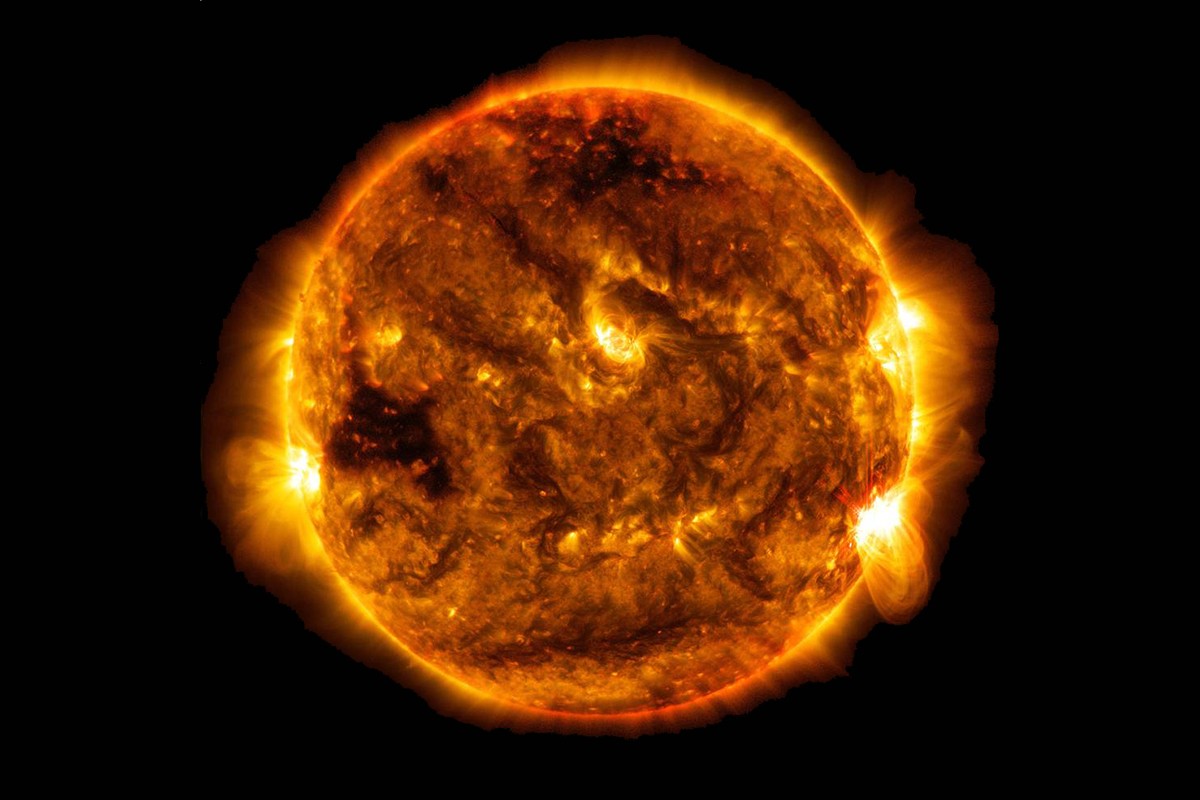The Sun, a seemingly average star in the vast universe, reigns supreme as the colossal center of our Solar System. It’s hard to fathom its true scale, especially when we consider our home, Earth. Just how many Earths could you possibly cram into the Sun? The answer, surprisingly, depends on what aspect you’re measuring.
 NASA SDO image of the Sun illustrating the immense size comparison to Earth
NASA SDO image of the Sun illustrating the immense size comparison to Earth
Let’s break down this astronomical question by looking at different measurements: mass, volume, diameter, and even surface area.
By Mass: A Staggering Number of Earths
When it comes to mass, the Sun is overwhelmingly dominant. The Sun’s mass is approximately 1,988,500 x 10^24 kg, while Earth’s mass is a comparatively small 5.9724 x 10^24 kg. Divide the Sun’s mass by Earth’s mass, and you discover that the Sun is about 333,000 times more massive than Earth. So, in terms of mass, it would take about 333,000 Earths to equal the mass of the Sun.
By Volume: Packing Earths into the Sun
Volume tells a similar, yet slightly different story. The Sun’s volume is an enormous 1,412,000 x 10^12 km^3, and Earth’s volume is 1.083 x 10^12 km^3. If you were to imagine filling the Sun with Earth-sized spheres – and assuming you could somehow squash them in without any gaps – you could fit roughly 1.3 million Earths inside the Sun by volume. This is a truly mind-boggling number, highlighting the sheer immensity of the Sun.
By Diameter: Earths Across the Sun
Diameter gives us a linear perspective on the size difference. The Sun’s diameter spans 1,392,000 km (864,000 miles), while Earth’s diameter is a mere 12,742 km (7,917 miles). If you lined up Earths across the face of the Sun, it would take about 109 Earths to stretch across the Sun’s diameter. This visual representation helps to grasp the Sun’s width compared to our planet.
By Surface Area: Covering the Sun with Earths
Surface area is another way to compare sizes. The surface area of the Sun is about 12,000 times greater than the surface area of the Earth. This means you would need 12,000 Earth surfaces to cover the entire surface of the Sun.
Comparison with Other Celestial Bodies: Jupiter, Mercury, and the Moon
To further put the Sun’s size into perspective, let’s compare it to other objects in our Solar System:
- Jupiter: As the largest planet in our solar system, Jupiter is still significantly smaller than the Sun. Only about 1,000 Jupiters could fit inside the Sun by volume.
- Mercury: The smallest planet in our Solar System, Mercury, is dwarfed by the Sun. You would need about 21.2 million Mercurys to equal the Sun’s mass.
- Moon: Our Moon, much smaller than Earth, is incredibly tiny compared to the Sun. You would need a staggering 64.3 million Moons to equal the Sun’s mass.
Conclusion: The Sun’s Immense Scale
No matter how you measure it – by mass, volume, diameter, or surface area – the Sun is astronomically larger than Earth. Whether it’s fitting 1.3 million Earths by volume or realizing the Sun is 333,000 times more massive, the numbers are truly awe-inspiring. These comparisons underscore the Sun’s dominant presence in our Solar System and help us appreciate the vast scales of space.
